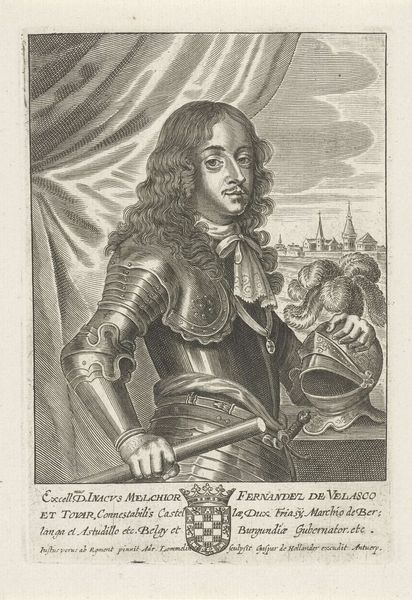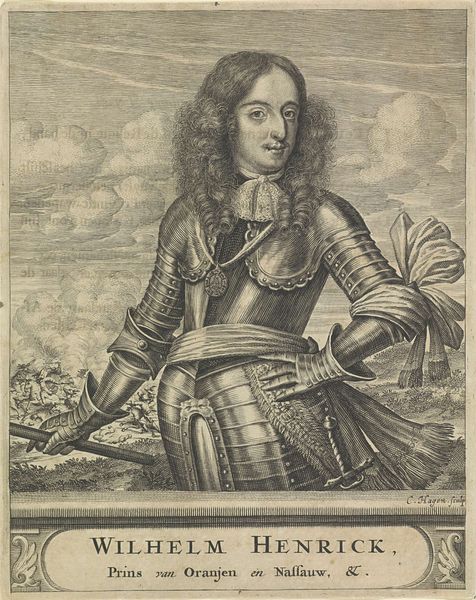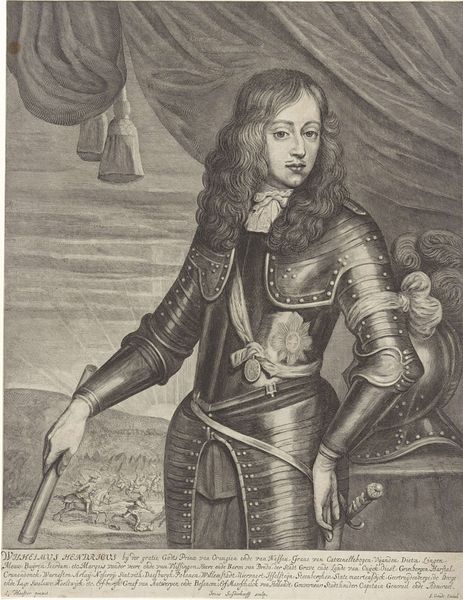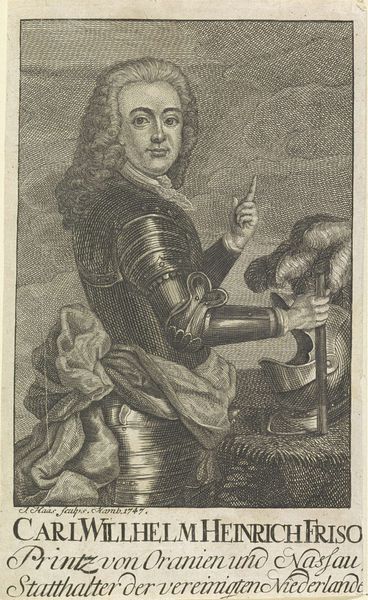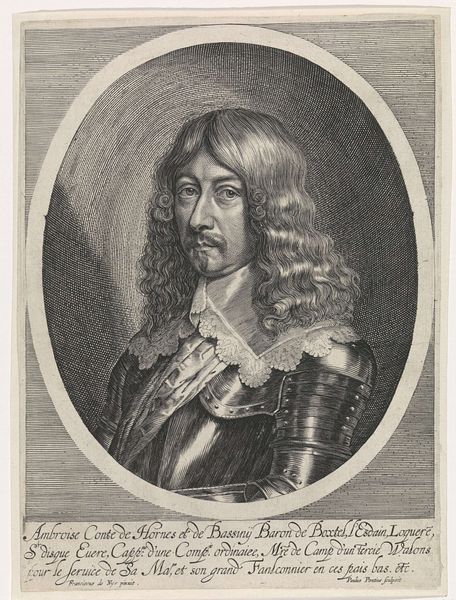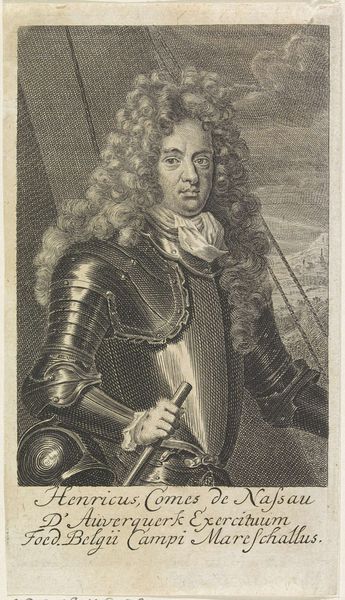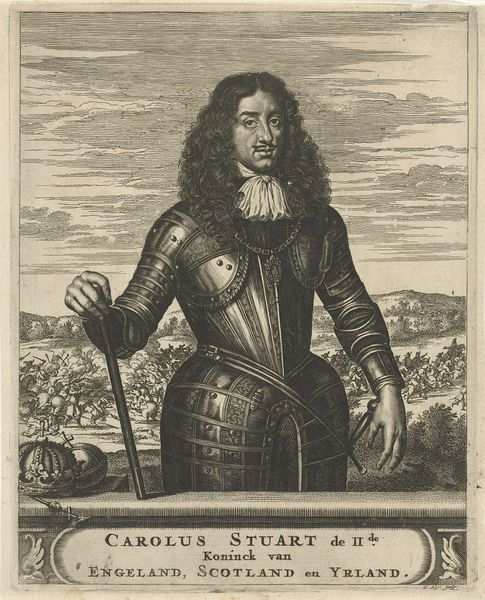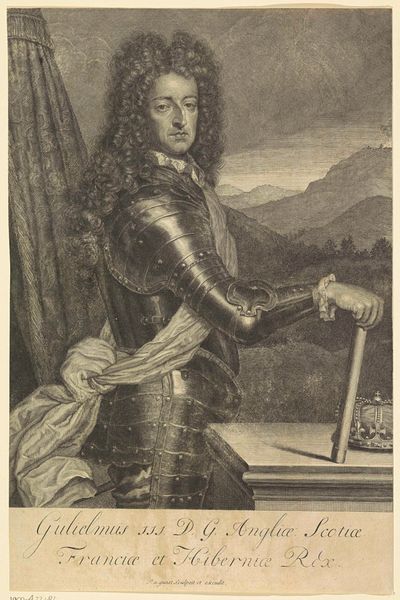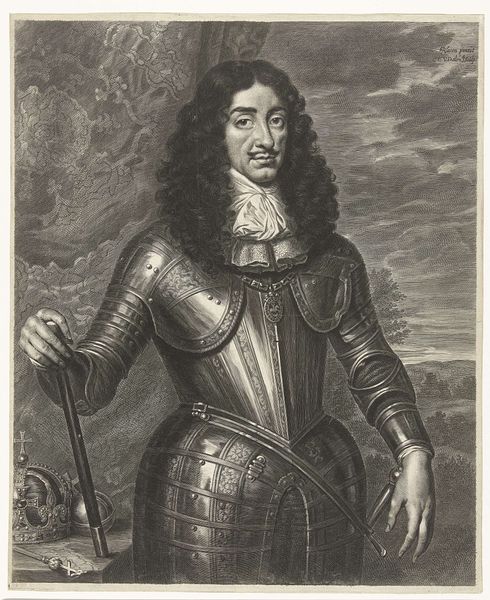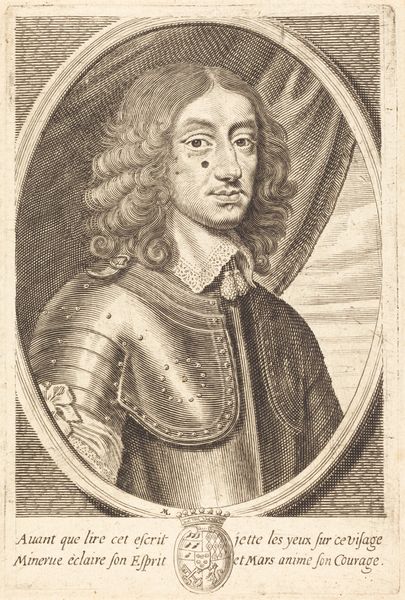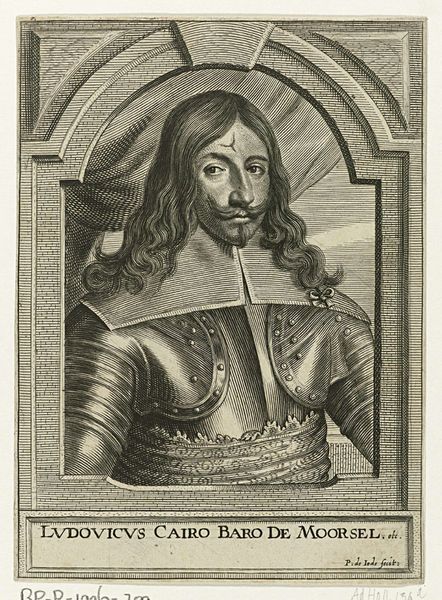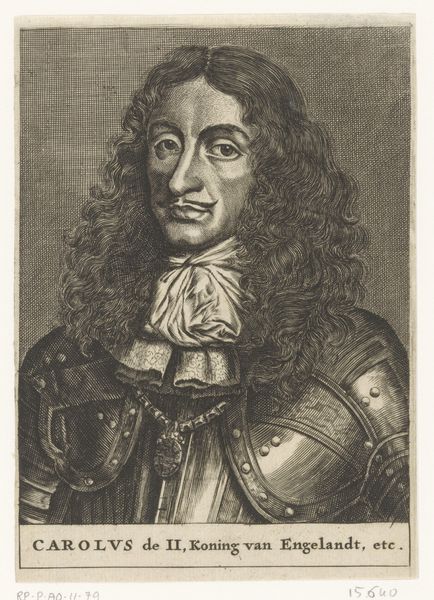
Portret van Inacho Melchior Ferdinand de Velasco, konstabel van Velasco en Tovar 1628 - 1670
0:00
0:00
print, engraving
#
portrait
#
baroque
# print
#
old engraving style
#
figuration
#
history-painting
#
engraving
Dimensions: height 169 mm, width 118 mm
Copyright: Rijks Museum: Open Domain
Editor: So, this is "Portret van Inacho Melchior Ferdinand de Velasco, konstabel van Velasco en Tovar," a print by Pieter de Jode II, sometime between 1628 and 1670. There's such a stark contrast between the highly decorated armor and his very delicate, almost soft, features. It’s a fascinating contrast. How do you interpret this portrait? Curator: I see this print as more than just a representation of a man in armor; it's a powerful statement about identity and power structures of the era. Consider the Baroque period: a time of immense social and political upheaval, rife with conflict around burgeoning nation states and religious reformation.. The armor, typically a symbol of strength, feels almost like a performative costume. It speaks to how masculinity, especially in positions of power, was constructed and presented. Does it resonate with today's discourse on performative identity? Editor: Definitely! The contrast you pointed out, between the imposing armor and the delicate features, makes me think about the masks we wear in different contexts. Was the artist critiquing or celebrating the subject's power? Curator: It's likely both. There's an undeniable element of idealization here. However, prints at this time served various purposes, including disseminating propaganda. This image highlights how the subject is enmeshed in the machinery of nobility and power. Notice also the smaller vignettes behind the figure. Editor: I do see the battles playing out! Given your interest in cultural contexts, do the landscapes represent a specific power struggle? Curator: Precisely. By placing de Velasco within a dynamic historical landscape, the artist elevates him beyond the individual. It invites a consideration of who writes history, and whose stories are centered. In effect, power is performative and tied to narrative control. Editor: That's a very insightful way to look at it. I'm beginning to see the print less as a straightforward portrait and more as a commentary on constructed identities of powerful elites, their roles and perception. Curator: Precisely! It demonstrates how art can simultaneously reflect and interrogate the socio-political norms of its time. These layers are crucial to uncover for any generation, helping us interpret art’s continuing significance.
Comments
No comments
Be the first to comment and join the conversation on the ultimate creative platform.
